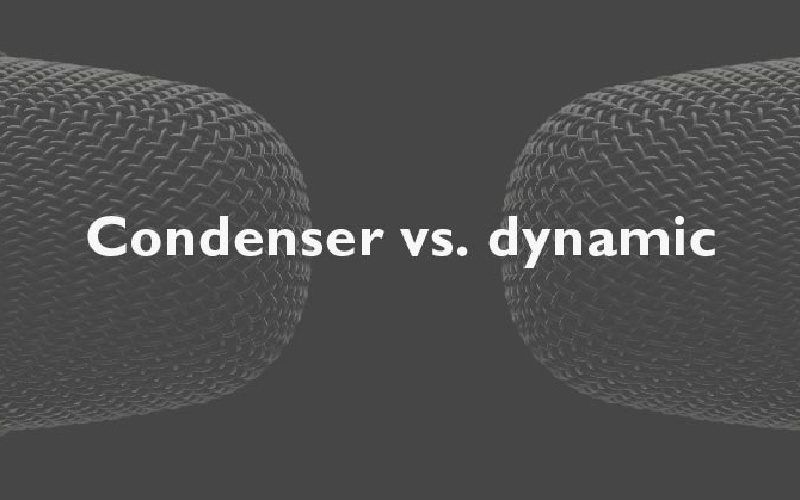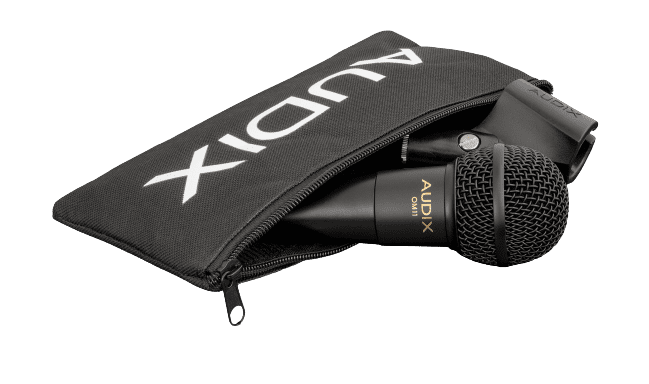There is no denying that making music is an art form. Whether you play guitar, drums or sing - each instrument must be made properly to reproduce our abilities. Along with the appropriate instrument, in order to sound or record that sound, we also need a suitable microphone. What most people don't realize is the impact that the right microphones can have when it comes to producing excellent sound quality. In order to better understand which microphone you should use for your next recording session, below we'll explore and explain the differences between condenser and dynamic microphones. These two different types of microphones, their pros and cons, will answer the key question: "Which microphone is right for you?"
Understanding the differences between condenser and dynamic microphones
Creating music can be an exciting experience, but in order to create the best possible sound quality, you need to use the right microphone. Condenser and dynamic microphones, two types of microphones often seen in front of singers at concerts or in recording studios. But what is the difference between them? How do you know which one is better for your project? In order to be able to make a decision when buying your next microphone, it is necessary to understand how these two types of microphones differ. The debate on the difference between dynamic and condenser microphones is never-ending. Condenser microphones have a higher sensitivity than dynamic ones, which makes them ideal for capturing details such as the subtle nuances of vocals or the sensitive plucking of acoustic guitar strings. They require power from an external source such as batteries or phantom power to operate, which can be inconvenient at times, but will definitely give you better sound quality. On the other hand, dynamic microphones have lower sensitivity levels and do not require any additional power sources, making them perfect for live performances. In addition, they tolerate loud sounds better than capacitors; which is great if you plan to record instruments like drums or those that make a lot of noise. However, the main difference between these two types of microphones is in the two different transducer or transducer principles. Both microphones have a diaphragm that vibrates in accordance with the movement of air around it, and that air is actually sound. The microphone transforms this movement of the membrane and converts it from acoustic to electrical energy. This is where the transducer comes into play, and each type of microphone has different characteristics of its transducer.
Condenser microphones
Condenser microphones are one of the most popular types of microphones used in today's recording studios. They serve to create beautiful soundscapes with minimal effort. Whether you're recording vocals in the studio or just looking for an easy way to record yourself playing guitar, these versatile microphones will make sure every note comes through loud and clear with crystal-clear detail. Although they are more suitable for studio recording, today we also find very good "live" condenser microphones, with which your vocals will sound very natural. From classical music sets recorded live, to pop songs recorded in home studios around the world, when it's time for audio production, look no further.
Our recommendation: DPA 2028 condenser vocal microphone
Dynamic microphones
Dynamic microphones have been around since the earliest days of music recording and are still one of the most reliable options today. Not only do they provide excellent sound quality while being relatively easy to use, they do not require any additional power sources. Dynamic microphones are used more for live performances where there is a loud sound source. They are considered the most suitable for loud live vocals. They are also very good for voicing drums and guitar amps, wind instruments,... However, their lower sensitivity means that some detail can be lost compared to a condenser mic, plus dynamic mics tend to be cheaper, so if budget is an issue, that could influence your decision. Whether you're a beginner just entering the world of music or a seasoned producer looking for a reliable microphone, dynamic microphones offer unmatched reliability without sacrificing sound quality.
Our recommendation: Audix OM11 professional dynamic microphone
Microphone selection
When it comes to audio production, there are a variety of microphones available to choose from - each with its own unique set of benefits. The key is deciding which microphone best suits your needs, whether you're recording vocals in the studio or performing live on stage. Both microphones offer excellent sound quality with their pros and cons. . Condenser microphones provide detailed recordings with a lot of clarity but require power from an external source while dynamic microphones do not need any additional equipment but may not capture as much detail due to their lower level of sensitivity. Ultimately, it all comes down to what kind of recording you're planning and what kind of sound you want! If you have access to additional equipment such as preamps, then a condenser microphone may be the right choice for you, otherwise, a quality dynamic microphone will do the job.
As exclusive distributors of DPA and other microphones, you can find the perfect microphone for yourself or your project in our offer. Whether it is a condenser or a dynamic microphone, our team will find the right solution. You can send your inquiry to info@lavprojekt.com













